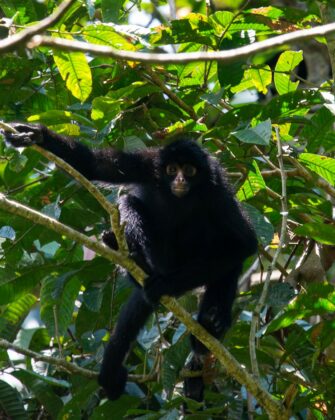Our team has been collecting information at Manu Learning Centre Biological Field Station (MLC) through various surveys like Terrestrial In Line Transects (TILT) focused on endangered birds and mammals. While at the same time, we consider all the incidental records, during our hikes inside the regeneration forest inside the MLC to obtain their occurrence data.
Primates serve as an indicator group for the health of the forest, as they play a crucial role in the forest regeneration process by being effective seed dispersers. Hence, it is essential to learn more about them.

The following graph displays the occurrence of the Peruvian Spider Monkey at the Manu Learning Centre for the years 2012, 2014, 2016, and 2018. It is clear that they tend to favour less disturbed forests and higher canopy levels. This preference could be attributed to the species’ physical characteristics, as they tend to seek out areas where they can move more freely while accessing essential resources for their survival. Notably, our records of Peruvian Spider Monkeys have increased over time, and they have also expanded their range within the forest.
This is where the significance of forests in self-regeneration and our protection becomes evident, as they act as a connecting link between primary and secondary forests, facilitating the development and habitat utilization of various animal species.
BSc Geography – G. Milagros Reyes Lizarraga – Senior Field Staff
